A hunter pace is coming! A hunter pace is coming! On September 7, 2019, the Santa Fe Hunt will be hosting a hunter pace at Garner Ranch, a working cattle ranch so picturesque and iconically Western, it’s been used in Hollywood films. If you’re reading this and are located in Southern California (or SoCal adjacent) join us! It will be the best $75 you can spend for a fun morning of riding plus lunch! Click here to sign up.
If all goes according to plan, I will take my horse Knight to this blessed event (please don’t lose a shoe, get an abscess, or sprain a muscle, Knight!). Wanting to find out more about the hunter pace because it’s all new to me, I had a chance to chat with Kristen Tregar, one of the organizers. Hailing from the East Coast, Kristen has ridden in many hunter paces. Her enthusiasm for them is contagious, and she was able to answer my questions providing insight on taking a horse ridden primarily in an arena to riding in wide open spaces. Read along to learn more.
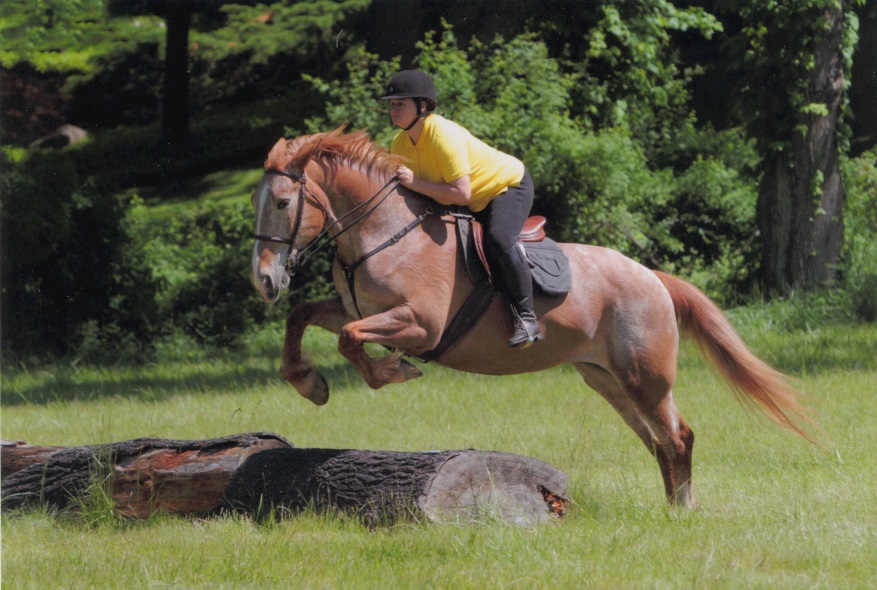
Kristen, shown here on Annie, hopes to introduce more riders to the joys of hunter paces.
What exactly is a hunter pace?
It’s basically a trail ride–like a modified trail ride. A course gets set with markers and people will ride that course in teams of two or three. In order to be competitive, the organizers will figure out what the time is to complete that course. (Susan’s note: there’s no map.)
Hunter paces originated in fox hunting, and the idea was if you are going across country fox hunting, you are picking and choosing the appropriate speed for the terrain you are on. So if you’re on something swampy, you can’t go galloping through it. If you’re on a nice farm road or corn field, you can really kick it and go flying by. The idea with the different divisions in a hunter pace, the fastest division would be the equivalent of going first field in a hunt so the idea is that if the footing is rocky or sticky or muddy, you would trot through that. If it’s decent footing but the path is winding not direct, you could canter that, but the nice straightaways with good footing you would gallop that.
For the next division down, the pleasure division is a little bit slower. So you would walk the rotten footing, trot the windy stuff and canter the straightaways. But no one is regulating how you are doing any of that. So more often than not when I was riding in a hunter pace I would end up walking the bad footing and hit a nice open straightaway and we’d just go zooming full tilt through there and during the winding areas we’d walk to balance out the time. It’s up to you–the idea is the riders are judging what is happening in the moment. The idea is to be very present in the moment with your horse making decisions about the best way to tackle the terrain.

Kristen and her mare Annie (right) at the start box during an East Coast hunter pace.
What is your advice for arena riders who want to try it, but are afraid to step out of the ring?
For arena riders, I’d say just do it! But to help with making it a positive experience, it’s recommended trying to team up with someone who has a horse that’s used to trails and that is willing to be patient. Horses tend to really like getting out of the arena once they understand the questions being asked. This kind of event is great for cross training because riders have the option to pick and choose their speed, not just at the beginning, but throughout the course.
Pardon the interruption, but SoCal photographer @ladyphotographic a.k.a Vanessa Hughes will be at the ranch taking photos which will be available via her site afterward. CLICK HERE to see photos the the October 2018 hunt clinic at Garner Ranch.
What is your experience with horses who have never done a ride like this before (like my horse Knight)?
Everyone has a first time! But probably the best example I have is my horse Nike. He was pretty much strictly an arena horse doing the show hunters on the East Coast, with the occasional trail ride. Our first hunter pace was a surprise! I was planning on taking my horse Annie, but she came up lame that morning so I had to take Nike. I was lucky I had a partner who was willing to let me figure out what kind of speed was going to work and would wait for us if Nike needed a little extra time to figure out a question (like crossing a small stream). He did great thought! And we ended up in 6th place, so he got a ribbon for his first time.
In terms of making a team, it’s like any partnership: it’s important to make sure everyone on the team has the same goals and is willing to take care of each other.
Are there set times for the groups to start? How do you not end up in one big clump following each other?
Usually riders will be sent out on a three to five minute delay. When you arrive you pick up the registration packet that has your team number, your lunch ticket and usually an index card. You give the index card to the people at the start line or start box. They will call and tell you when you have one minute, get ready and then go. They record what time they told you to go and then you’re on course.
Usually the courses are anywhere from eight to twelve miles with different terrain. There’s jumps on the course but they always have go around so you don’t have to jump. So most hunter paces I’ve ridden in have a hunt division (the fast division), the pleasure division (the slower one–sometimes called hilltoppers), a Western division which is usually in between the times, and then a junior division to pick a slower pace if you’ve got Pony Clubbers or people who want to come out and school the jumps a little bit and they want to take their time or stop and talk through their choices. It’s really an opportunity to learn. Usually the juniors are a little bit slower. For any of those you can pick and choose the jumps you like. There are no jump judges, no penalties for going around, but it does slow you down. So if you’re in the hunt division, but you’re skipping all of the fences, it’s going to take you a little bit of extra time so you’d need to hustle a little bit more on the flat.
What if I get in a group and find I’m not comfortable? Can I go back to the start and join a new group?
The teams are not randomly assigned. People generally ride with friends they pick, so it’s kind of on you to pick your friends. That said, if people want to come but don’t have a team, we may be able to help them find someone to ride with or a team to join.

The hunt at Garner Ranch. (Photo by Lady Photographic: CLICK HERE for more hunt photos.)
Is it a newbie-friendly type of event to attend? All you have to do is bring your horse, wear a helmet and figure out which division you’re going to be in and who you’re riding with and have a good time?
Totally. That’s it. More than anything, the idea is to just have a good time with your horse. It’s the kind of thing kids love these, older people who aren’t necessarily as athletic as they used to be, but at the same time people who are at the peak of their game, for example, if you’re an eventer and you want to go out and run cross country and do it with a friend, this is a great way to do that.
Want to attend the Santa Fe Hunter Pace? Click here for more info and registration.
Can you describe the venue for the September 7 Hunter Pace at Garner Ranch?
The terrain is beautiful. Coming from the East Coast, the idea of doing a hunter pace there is the stuff of dreams. Garner Ranch is in a valley surrounded by mountains. Often the mountains have a little bit of snow on the top, so it’s super picturesque. It’s a high pine forest. There are open fields, there are cows, it’s a working ranch. You’ll go through cow fields and then you go through a patch of trees and it’s a kind of woods you don’t see that much in Southern California, so it’s really exciting. There’s a river wash, there are some good hills, it’s pretty varied. It’s absolutely magnificent. And for people old enough to have watched Bonanza, that opening scene in Bonanza with the dad the three brothers galloping along with their horses–that was shot at Garner Ranch. It’s got a Hollywood history.
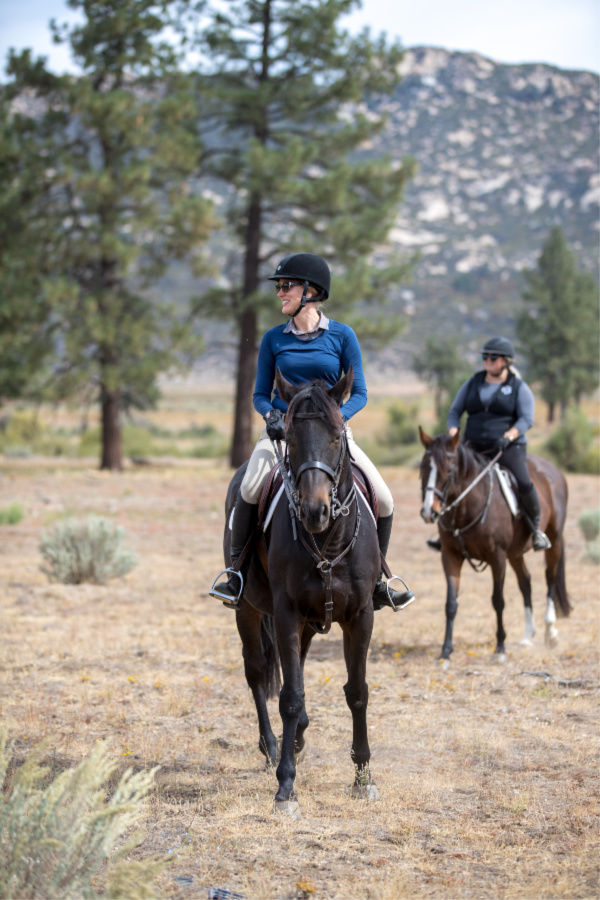
All smiles riding at Garner Ranch. Hunt Seat Paper Co. photobombing. (PC Lady Photographic)
If someone wanted to come to this hunter pace but they had never done one, what would be important for them to know? About getting there? What to wear? What to bring?
Bring your normal tack. Bring enough hay so that your horses can hang out and snack because there is a lunch afterward–so they’ll have time to relax and take it easy when you get back. The dress is pretty informal. Often teams will try to coordinate so they have the same matching saddle pads, matching shirt. Helmets are super important because you’re going cross country, so those are required, but more than anything the idea is to just go and have a good time. An important part about how the hunter pace functions is that there are no maps. So when you go, part of what your task is as a rider is to be attentive as to where the markers are and stay on course
Going back to the idea of there not being a map–what do the markers look like?
There are usually stakes with ribbon and often as you get closer to the fences there will be signs that say “Go around to your right,” or “Walk please,” if there’s a mandatory walk area. Traditionally there is always at least one check point. So at the halfway point riders will come up in part which allows the organizers to know where everybody is. It’s a good chance to stop and give your horse a chance to breathe. There’s water for horses and riders. Usually a little port, cookies, apples for the horses. It’s like a rest stop part way.
What’s important about the no map part: There are two pieces of information that don’t get publicized in advance. One of them is the course, so riders coming into it don’t know how long the course is, they don’t know what the course is, and they don’t know the ideal time for their division. So effectively you’re missing all the information you’d need to try to really be competitive if you are a super competitive person. So it becomes more about just trying to judge the terrain and make your best guess. But at the end of the day, there’s a limit to how functionally competitive you can be. So while it is a competitive event and there are ribbons and there are prizes, realistically it’s an opportunity to go and have a good time with your friends, ride cross country, meet people, hang out at the luncheon and ride somewhere where you ordinarily would never have the opportunity to ride.
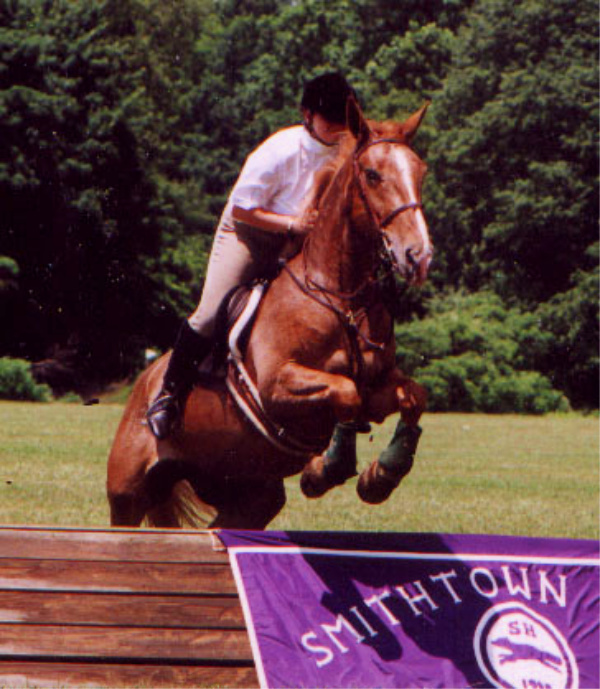
Kristen and Annie jump a coop during the Smithtown Hunter Pace.
The first couple of years I rode in hunter paces I wasn’t riding to be competitive at all. I used them as an opportunity to get out and have a good time with my horse and school some natural obstacles. The first one that I did had a beautiful stone wall. And I had such a good time jumping over it, that we came around and we did it a couple times because it was just so fun and I didn’t have access to stone walls where we boarded. It was a rare opportunity to do something I hadn’t otherwise been able to do.
What will the jumps be like at the Garner Ranch Hunter Pace?
It’s going to be a mix. So there are coops that are always set up that are right in the fence line. For people who don’t want to do them, there are gates so you can go around. In addition the course will have some natural obstacles like logs and we’ll make sure there’s a nice approach and nice landing, so they’ll be pretty groomed. The plan right now is to also bring some straw bales and standards and poles so we’ll have simple jumps. The coops are around 3’3” so they’re large enough to satisfy riders looking for bigger fences, but a lot of them will be good for beginners and smaller. At a number of the hunter paces I did that I really liked, they had a high-low jump set up. If you and your teammate wanted to jump and both of you were comfortable with one side, you could go over it at the same time which is kind of fun, and not something you get to do very often.
What would you say the weather will be like in the mountains on September 7 for the hunter pace? If it’s in the mountains will it be cooler?
It will be cooler than most of Southern California but it will still be hot in September. If it’s an average day it will probably be like mid 80s. We’ll open the gates at 8:00 a.m. and the first riders will go out at 9:00.
How long does 8 to 12 miles typically take? Just trying to get an idea for people like me, more used to riding in an area, is that all afternoon? How fast does that go?
This is like insider trading, but my guess is it will be around an hour and 15 for the fastest group, and for the pleasure division maybe an hour and 35 or 40. I knew one guy that managed to finish a 10-mile hunter pace in 45 minutes! I don’t know how he did that. I’ve been on some where the course was incredibly long–like 14 miles and it took like two hours and 15 minutes, and that’s just too much.
Usually most people do the pleasure division because they want to look around and take it easy. Also, there are water troughs all along the way and we’ll pass them, so there are opportunities if you want to stop and give your horse a drink, you can, but you’re battling the clock; if you’re trying to be competitive, you’ve got to keep going. If you’re not worried about it and you’re just trying to have a good time then you can stop and take a moment and take pictures.
What if I want to watch or come take pictures for the September 7 hunter pace?
Guests can come to watch, and it’s only $15 for non-riders to join for the luncheon following the hunter pace.
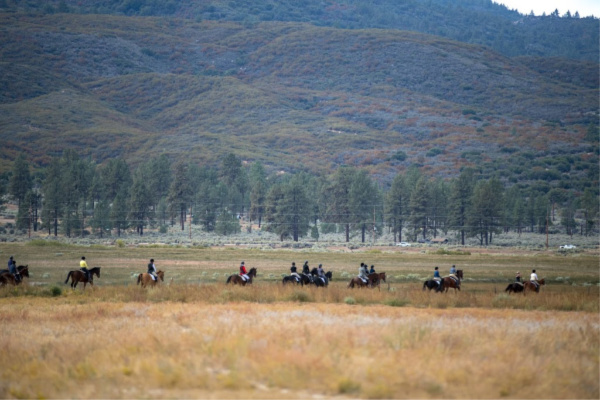
Picture yourself riding here during the Santa Fe Hunt Hunter Pace. (PC Lady Photographic)
Is there someone there to watch/tend horses during lunch?
The trailers will be close to where lunch is being served so horses should be in relatively plain view and certainly in hearing distance if there’s an issue. But I’d imagine we’ll have people walking around the whole time anyway.
What if I want to come but I don’t live in Southern California?
For people coming from a distance, there may be overnight stabling available at KingsWay Farm or Galway Downs (both in Temecula) for an additional fee.
I want to ride, but my horse isn’t ready. Do you have recommendations for horse rental?
There might be a few rental horses available, but this is a great event for horses that are in training. You can walk the whole time if you want to. The level of fitness is way below other events, if you need it to be. (Susan’s note: if you’re seriously interested in a rental option, send me an email susan@saddleseekshorse.com and I can get you in touch with the right people to inquire about horses.)
Thanks for reading and tally ho!
Question: Have you ever ridden in a hunter pace? What was your experience like? What’s the best advice you’d give a first timer?
Join my email list for horse-centric people like us. Click here to get the scoop about fun new products, horse stories and equestrian inspiration via twice-a-month emails. No spam.
Trot along with us on Instagram, Facebook, Twitter and Pinterest.

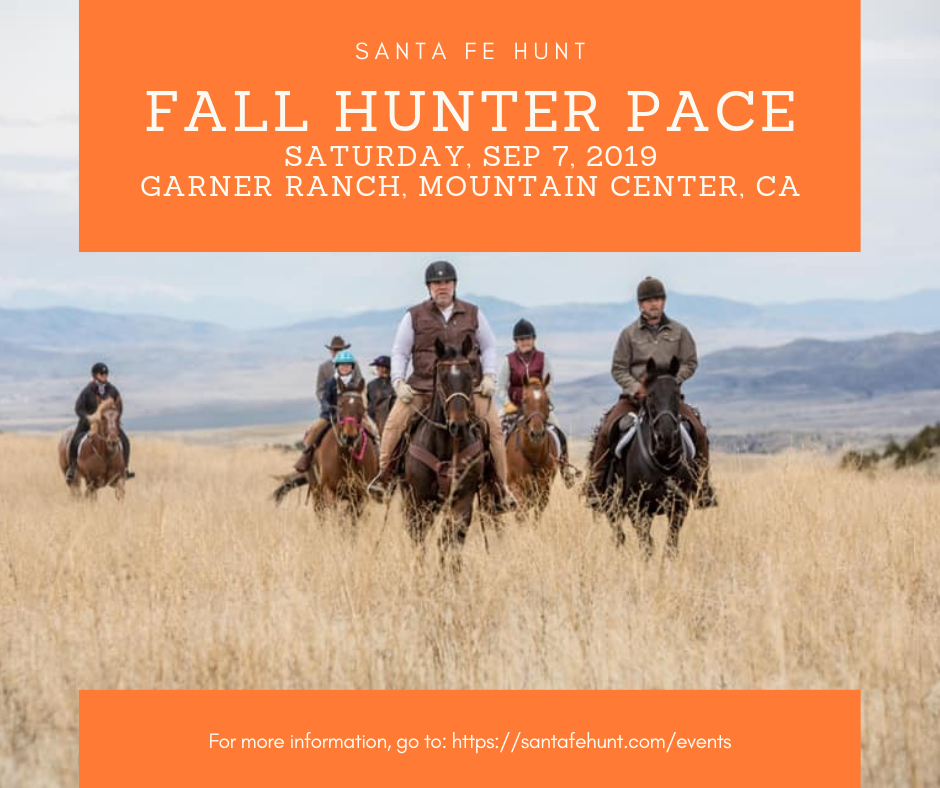
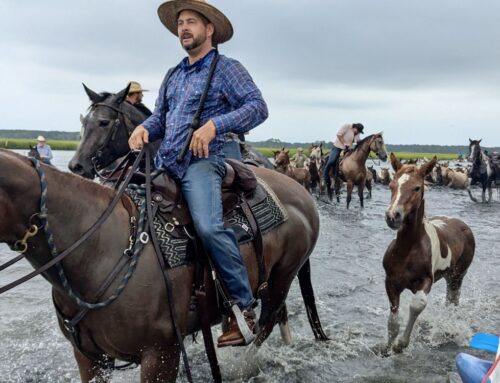
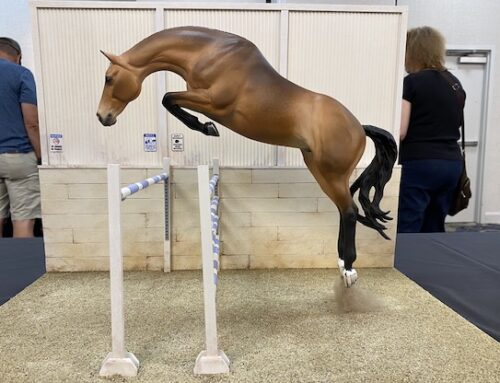
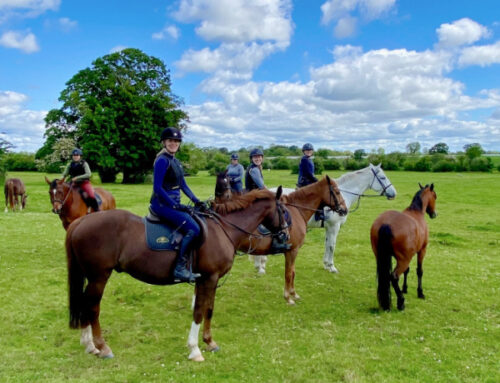
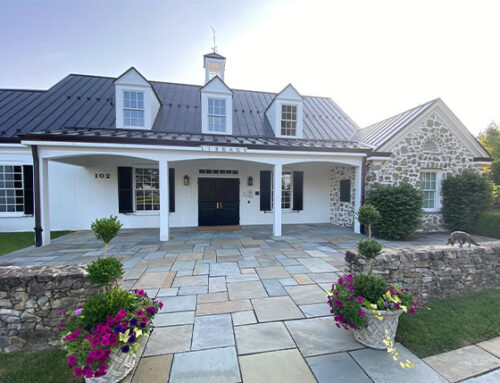
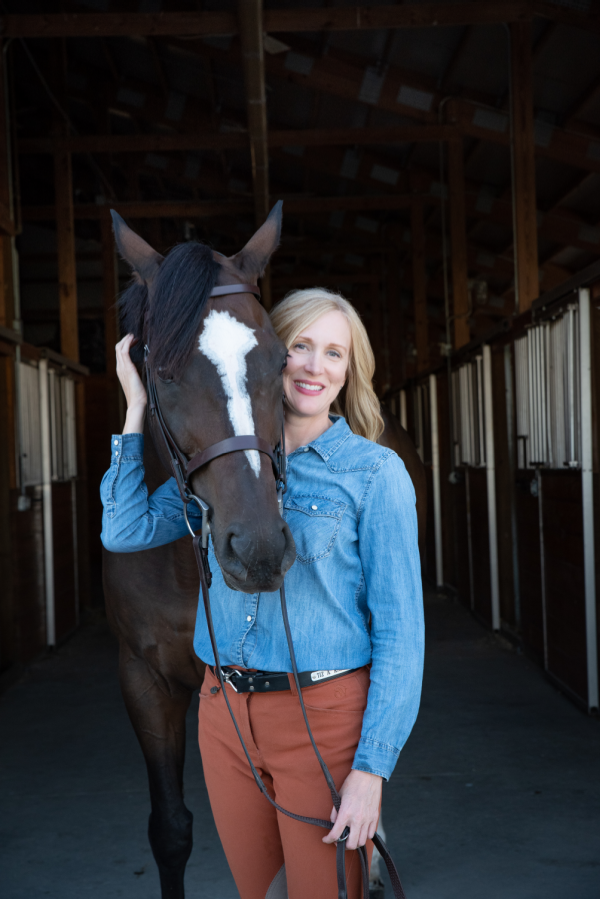

Thank you so much for this great information!